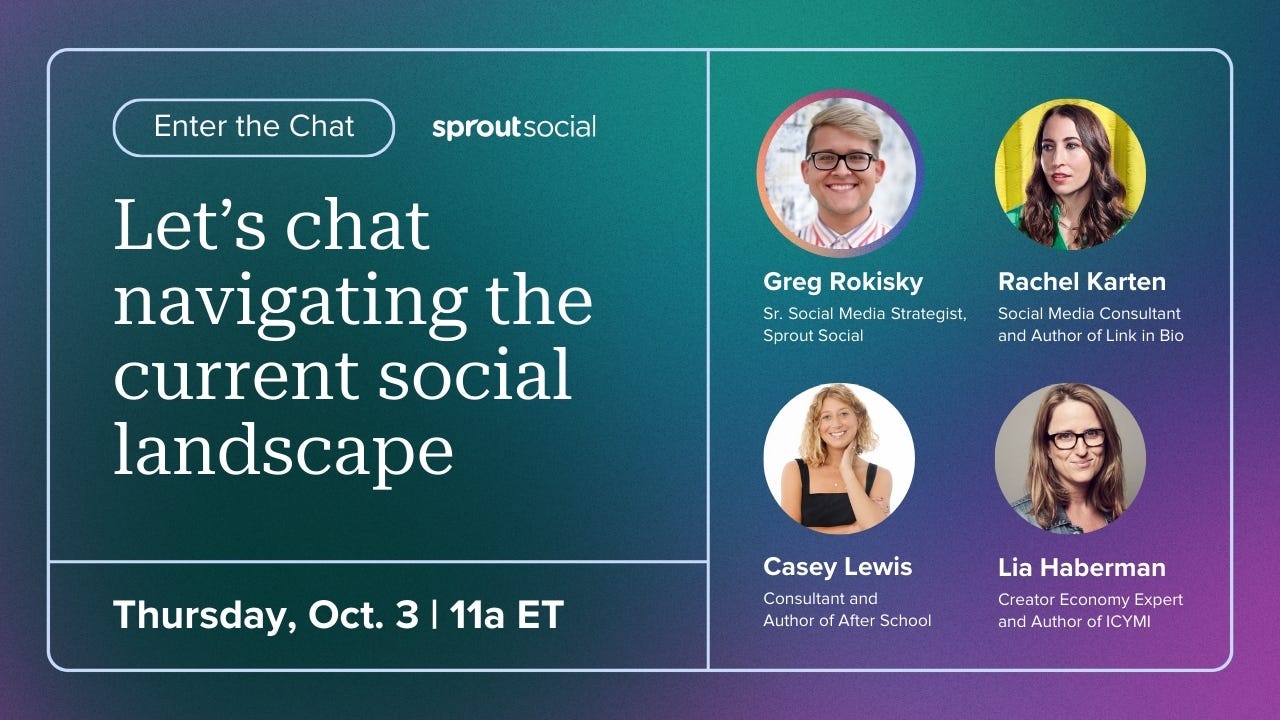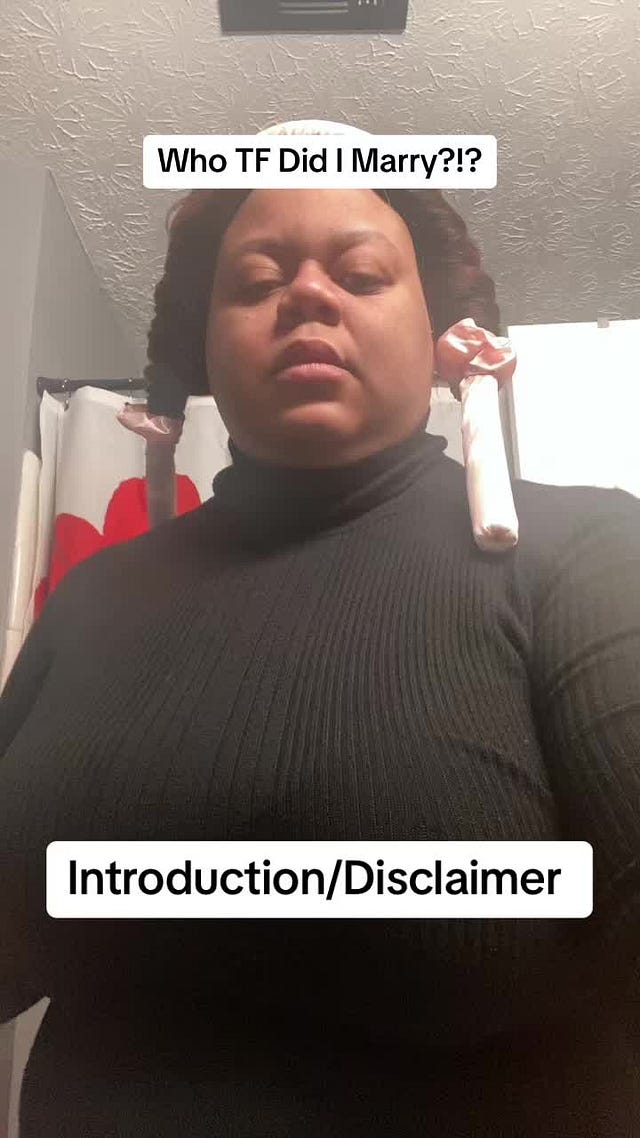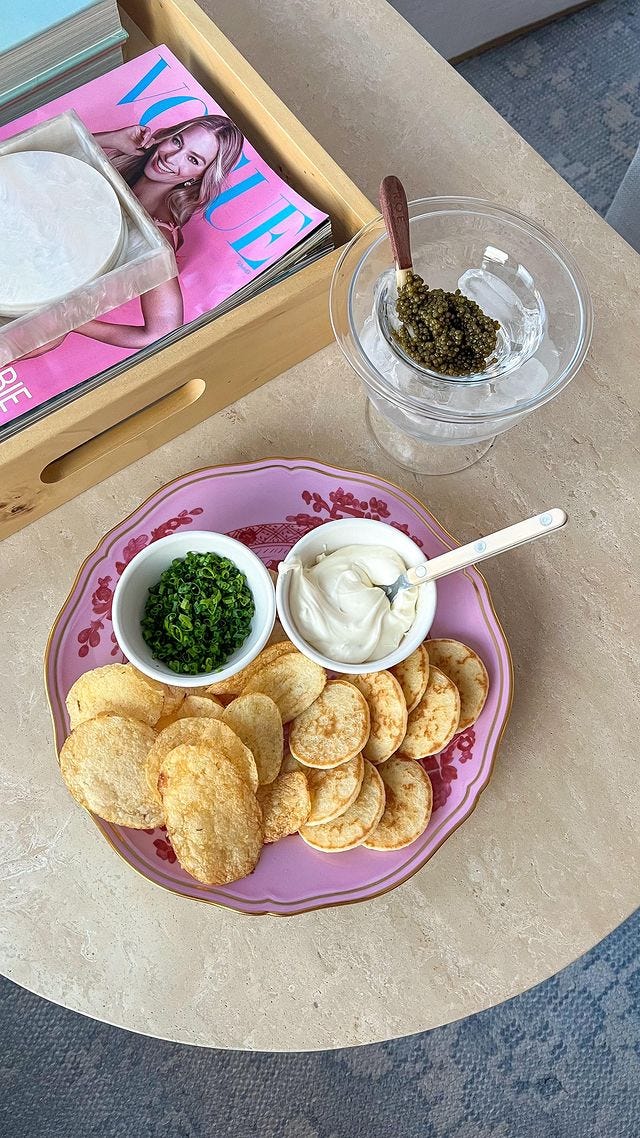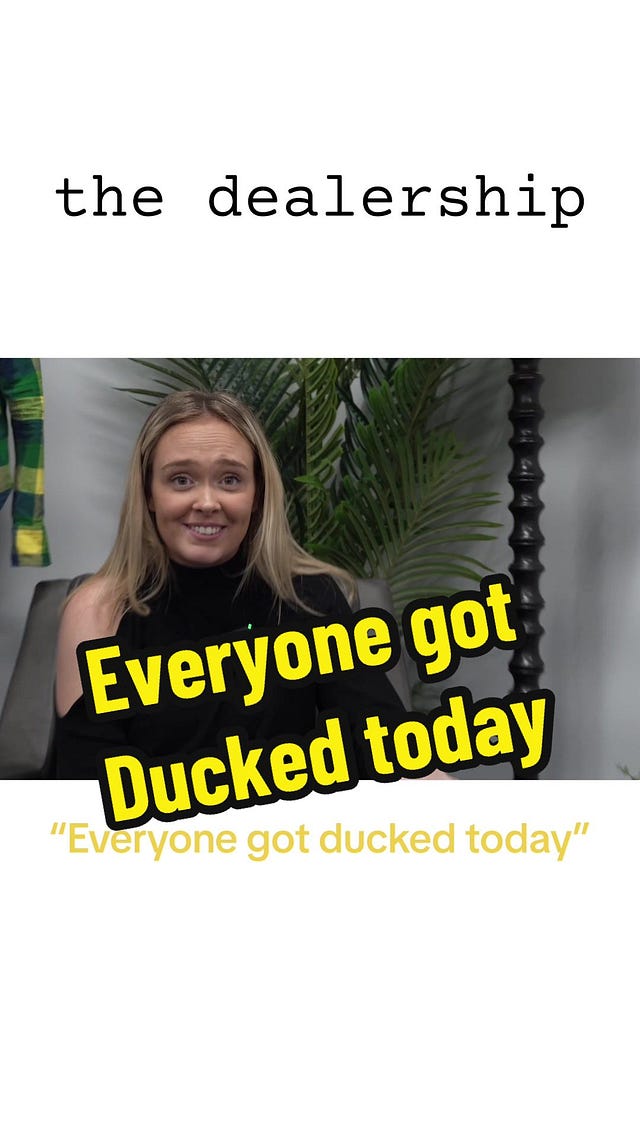It’s official: social media is officially in its entertainment era.
Reesa Teesa’s 50-part series racked up millions of views — and a TV adaptation; Mohawk Chevrolet’s Office-style parodies are taking off; and #MomTok is taking over our screens, on social and streaming.
This new era means one thing — creators and marketers have to start taking on the mindset of Hollywood TV executives.
It’s time to think of YouTube, TikTok, and Instagram as modern-day cable TV and program accordingly.
People scroll their feeds and stop when something hooks them, just like we used to scroll through channels until we landed on an interesting or familiar show. Audiences are following this same logic on social media. So, why not give them what they’re looking for?
Audiences want to be entertained. And the data shows it. This year, YouTube had the honor of being the first streaming platform to account for more than 10% of monthly TV viewing (people are watching the app on their big screens). And Nielsen — the TV ratings people — crowned YouTube the #1 streamer in America 12 months straight.
Now, the video platform is leaning into it even one step further with the latest announcement that YouTube creators will be able to curate videos by Seasons and Episodes! That means we’re likely see even more specialized series such as First We Feast’s Hot Ones, Vogue’s 73 Questions, Mark Rober’s Glitter Bomb and more.
But the idea of programming around a specialized topic for a targeted audience isn’t exclusive to YouTube.
Let’s get into some of the best TV-style content examples across all three major platforms, the benefits for both brands and creators, and a handy guide to getting started.
A MESSAGE FROM TODAY’S SPONSOR
This special edition of ICYMI is brought to you by Sprout Social!
A good B2B series is just as important as an unhinged comedy or play-by-play drama.
Every month, Sprout Social hosts a live LinkedIn series called Enter the Chat. It’s a conversation meant to give you the insights, trends and tools needed to stay ahead in the evolving social landscape.
On Oct. 3, I’ll be joining my fellow newsletter queens Rachel Karten and Casey Lewis and Sprout Social’s Greg Rokisky for a roundtable about navigating the current social landscape.
We'll review new findings from Sprout’s new Social Media Content Strategy Report and reveal what’s genuinely driving engagement today.
🗓️ RSVP to Enter the Chat with us, Thu, Oct 3, 2024, 8:00am PT!
5 SERIES TO INSPIRE YOU
Here are 5 examples of brand and creator series’ and their takeaways.
#1: Reesa Teesa: Who TF Did I Marry
Reesa Teesa’s TikTok Series, Who TF Did I Marry, went viral and became a global discussion. Who could have predicted that a 50-part series would catapult Teesa into star status? But it was so unique and intriguing that we were all hooked. Now, the social storyteller has an agent and a TV show in the works.
⭐️ The Takeaway? If you have a story, tell it! The biggest takeaway here is that you don’t always need to storytell through skits, memes or dramatic re-enactments. Sometimes, life really is stranger — and better — than fiction. As long as you launch with a strong hook, maintain the tension with regular cliffhangers, and deliver an ending that ties up all the loose ends, the audience will keep coming back for more.
 Tiktok failed to load.
Tiktok failed to load.Enable 3rd party cookies or use another browser
#2: Alexis Bittar: The Bittarverse
Brooklyn-based jewelry and lifestyle brand Alexis Bittar took a fun — if slightly unhinged — marketing approach on TikTok with their series “The Bittarverse.” The brand created telenovela-style skits around larger-than-life characters, such as fashion diva Margeaux Goldrich, her assistant Jules, and sister Theresa the Coney Island Goddess. Some commenters wrote, “What is this, I need to watch” and “I don’t even know what this is but MORE PLEASE!!!”
⭐️ The Takeaway? Your series content doesn’t need to speak directly to the products you sell or services you provide. Sometimes, it’s the more bizarre, background approach that generates the most engagement. The “what is this, I need to watch” marketing catches people's attention (See: NutterButter’s TikTok). Then, as you get them in the door with your entertaining series, they’re more likely to be interested in your always-on branded content.
#3: Wishbone Kitchen: Sunday Snacks
Meredith Hayden, best known as Wishbone Kitchen, recently launched her Sunday Snacks series where she talks about the best snacks for couch lounging or watching the big game. Meredith shared the importance of Sundays for her community – it’s the day she typically receives the most tags from her audience making her meals.
⭐️ The Takeaway? This series is so on-brand for Hayden that it’s a shock she wasn’t already doing it, alongside her cooking demos, trips to the farmers market and cookbook promotion. Sometimes a series isn’t a new concept, it’s simply an extension of what you’re already doing. Look at Jennifer Garner, who turned her love of cooking — and friendship with Ina Garten — into the “Pretend Cooking Show.” It made its debut as an occasional series on Instagram and now is also on YouTube. It’s worth considering if there’s a super obvious spin off you haven’t capitalized on yet. Now is the time to take it and turn it into a daily, weekly, or even monthly series.
#4: Fallen Media: Street Hearts
Street Hearts, produced by Fallen Media and hosted by Tiffany Baira, pairs two New York City strangers to find out if they’re a match. The street-talk series has garnered millions of views for its entertaining videos, but this branded content episode that took place in a bed in the middle of Central Park was a particularly interesting model blending studio content, creator content, and a branded partnership, all rolled into one.
⭐️ The Takeaway? The first comment on the Westin Hotels & Resorts partnership video was “love that your ads are just as fun to watch.” This is a reminder that whether you’re a brand or a creator, branded content can (and should) be just as fun as your “organic” episodes.
#5: Mohawk Chevrolet: The Dealership
Mohawk Chevrolet’s miniseries “The Dealership,” which feels like a spin-off of The Office, has generated millions of views on TikTok. It’s witty, hilarious, and is all employee-generated. It’s a great example of how a brand can take something so mundane as a car dealership and turn it into genius content marketing.
⭐️ The Takeaway? It doesn’t matter what industry you’re in, you can create an entertaining series. It doesn’t need to be slick, highly produced or have paid actors to get started. This is social after all. It can be shot on an iPhone and have a low-fi, casual feel without sacrificing value. You just need a good idea and the willingness to commit to the part.
WHY YOU SHOULD CREATE A SERIES
Now, let’s get into the benefits of series content for both brands and creators.
Series Benefits for Creators:
Platforms are prioritizing interest-based content which has put more of an emphasis on niching down than ever before. Episodic tends to focus on topics that audiences feel passionately about.
Creators get to develop a defining franchise or creative IP (intellectual property) that, if they’re lucky, viewers will come to know and love — and brands wants to buy into.
It can help avoid burnout. It’s a lot more sustainable to plan, produce and distribute an episodic series than it is to wake up and figure out what trend to chase that day.
Series Benefits for Brands:
People’s attention is shifting: Americans are spending less time watching traditional TV than they are streaming services and other platforms. This is an opportunity to follow the eyeballs.
It’s a consistent and extended opportunity for promotion, whether through a brand-owned series or by sponsoring a creator-led series. But make no mistake, this isn’t advertising or infomercials people swipe past. This is compelling storytelling with an opportunity for product placement within the show.
By collaborating with a creator, brands are able to tap into audience insights (trust me, they know what people want to watch!) and get to position the creator as a character within the entertainment universe that’s being established.
*Taken from last year’s post: What Creators & Brands Can Learn from TV
Your Guide to Getting Started
#1: Decide how you’ll tell your story
There are two popular formats you can borrow from:
Episodic Series; each episode is a stand-alone show, like Friends, you don’t need to watch every episode to know what’s going on.
Storyline Focused; each episode builds on the last, like Love Island USA, it would be hard to pick up halfway through the season
#2: Pick a format for your “show”
There are many types of shows you can choose from, including:
Reality TV — tales from your dating or family life
Makeover — put your own spin (and hashtag) on GRWMs
Competition — power rankings of your favorite products or places
Documentary — explainers, educational or behind the scenes series all qualify
Comedy — skits and humor like Sabrina Brier’s “That friends who…” series
Drama — true stories from the trenches or, if you’ve got the skills, dramatic sketches
Lifestyle — your social twist on an HGTV or Food Network show
#3: Decide on the desired emotional outcome
What emotion(s) do you want your audience to feel watching this? Here are some ideas:
Amusement
Joy
Confidence
Comfort
Longing
Anger
Surprise
Suspense
Relief
#4: Plan the recurring elements in each “episode”
Before you begin filming, nail down the important series elements. Here are some to consider:
The Title: Aim for something easy to understand and share. It should be unique to you and your series.
The Main Character: This is you, or whoever you put in front of the camera, on the regular. Audiences like to watch predictable and recognizable faces.
Recurring Characters: These are the people in your multiverse that go in and out on a regular basis (coworkers, friends, neighbors).
The Set: Here’s where your “show” takes place. Note: Audiences tend to prefer an authentic environment like your living room over a set.
Familiar Audio: Think of your audio like an old-school TV theme song, people’s ears should perk up at the sound cues, music, or voice over you use.
Recognizable Visual Cues: Whether it’s branding elements — like the color scheme, your chosen fonts, or a branded cover image — it should be instantly recognizable.
A Regular Schedule: By releasing your series on a consistent schedule you create a sense of anticipation. It’s like a reward for your “viewers”.
Your Filming Style: Keep your filming style consistent and creative. Creator Vita Kari starts each video with a dramatic reveal and Yuri Lamasbella impersonates Khloe Kardashian with Post-It nails.
#5: Careful casting
If you’re a creator, this part is easy. You’re already the star of your own show. Now, you just have to think about the recurring characters you might want to introduce as part of your franchise.
If you’re a brand, you’ll want to pair with a creator or use in-house talent.
Take a page from The Washington Post’s Dave Jorgenson who shared some advice during a keynote at a recent State of Social conference. When building a media franchise, he talked about how important it was to gain internal support from the get-go and intentionally adding new characters to build out the WaPo social world:
“I included a bunch of people in the video from the Washington Post. And that's actually a big part of our success, using the company as much as possible and getting people excited about it,” said Jorgenson. “I think that's one of the biggest tips I can give is when you have everyone else in the company excited about the weird things you're doing and the weird risks you're taking, and they feel ownership in it, then they're going to support you.”
When it comes to adding “cast members” to the company’s social series, Jorgenson says they approach it like a Marvel cinematic universe: “It just means, like, ‘Oh my god, I’ve seen that person. That's my favorite character. She was in the other TikTok about the other thing.’ And slowly, people start to build their favorites that are sprinkled in all the videos. And it's really fun to actually do actual world building that way.”
Note: if management is hesitant to sign off on social content based on “key characters” who could leave the company, then a constantly evolving cast of characters — who can jump in and pick up the slack when someone leaves — solves for that potential dilemma.
What do you think about episodic content? Do you think it’s here to stay? Will it replace streaming platforms? Let me know in the comments! And if you have any favorite series’ (brand or creator), please share them with me. I’m always looking for shows to watch.












Just saw this in Rachel Karten's newsletter and it's such a good example of a series account: https://www.tiktok.com/@ramenonthestreet!
Def signing up for the event with Sprout 🌱🥳
Also in love with this title because TikTok and YouTube are my tv